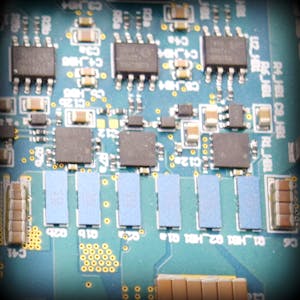Book Review: Power Electronics – Essentials & Applications by L. Umanand (Free PDF)
Introduction
Power electronics forms the crucial bridge between low-power electronic circuits and high-power systems used in industry, renewable energy, and transportation. It deals with efficient conversion, control, and management of electrical energy using semiconductor devices.
L. Umanand’s Power Electronics: Essentials & Applications stands out as a comprehensive textbook that skillfully combines theory with design and practical application. It brings together the essential principles of devices, circuits, and systems, making it an ideal guide for students, educators, and practicing engineers.
About the Author
Dr. L. Umanand is a faculty member at the Centre for Electronics Design and Technology (CEDT), Indian Institute of Science, Bangalore. With extensive academic and industry experience, he has contributed significantly to power electronics education and research in India. His approach emphasizes understanding through system-level thinking, mathematical modelling, and real-world design considerations.
Overview of the Book
The book, published by Wiley India, is nearly 900 pages long and covers a broad range of topics from the basics of semiconductor devices to complex control and reliability concepts in power electronics systems.
It is organized into two major sections — Circuit-Oriented Topics and System-Oriented Topics — ensuring that readers move seamlessly from fundamentals to advanced concepts.
1. Circuit-Oriented Topics (Chapters 1–7)
These chapters focus on the essential building blocks of power electronics systems:
-
Power Semiconductor Devices: Detailed discussion on static and dynamic characteristics, switching losses, and thermal aspects of BJTs, MOSFETs, and IGBTs.
-
Gate Drive and Snubber Circuits: Practical insights into driving methods, isolation techniques, and energy absorption networks for safe switching.
-
Rectifiers and Regulators: Operation and design of AC–DC converters, both controlled and uncontrolled.
-
Switched-Mode Converters: Comprehensive coverage of DC–DC topologies such as buck, boost, buck–boost, and isolated converters.
-
Inverters: Single-phase and three-phase inverters, PWM techniques, and harmonic analysis.
-
Magnetics Design: Theoretical and design aspects of transformers and inductors used in converters.
2. System-Oriented Topics (Chapters 8–15)
The latter part of the book takes the reader from circuit-level understanding to system design and modelling:
-
System Modelling: Average and small-signal modelling, state-space representation, and transfer functions.
-
Control of Power Converters: Fundamentals of feedback, digital control, and stability considerations for converter control loops.
-
Thermal Design: Heat dissipation, junction temperature estimation, and cooling methods for reliability improvement.
-
Reliability Engineering: Methods for reliability prediction, failure-rate estimation, and component derating.
-
Digital Implementation: Basics of discrete-time computation, ADC/DAC considerations, and real-time controller design.
Key Strengths of the Book
-
Balanced Approach: It covers both theoretical analysis and practical implementation, providing a holistic view of power electronics systems.
-
Design-Oriented: The emphasis on magnetics, snubbers, and thermal design reflects real-world engineering challenges.
-
System Thinking: Beyond circuits, the book integrates control and reliability—often missing in standard textbooks.
-
Rich Pedagogical Features: Each chapter includes examples, exercises, and learning objectives that reinforce understanding.
-
Indian Context: Concepts are explained with examples suited to typical academic and industrial conditions in India.
Limitations
-
The book’s publication predates recent developments in wide-bandgap devices such as SiC and GaN, which now dominate advanced designs.
-
Some topics assume prior familiarity with control theory or system dynamics, which may challenge beginners.
-
For researchers focused on very high-frequency magnetics or emerging converter topologies, additional references may be needed.
How to Use This Book Effectively
-
For Students: Start with device fundamentals and converter chapters before progressing to control and reliability sections. Solve every numerical example to develop analytical skills.
-
For Educators: Ideal as a semester-long course text; the first half can serve as core material, with later chapters for advanced modules.
-
For Practicing Engineers: Use the design-oriented chapters on magnetics, thermal management, and reliability as quick references during hardware development.
Why It’s a Must-Have Book
This textbook bridges academic understanding and industrial relevance. Whether you are learning the basics of DC–DC converters or exploring control and reliability in inverter systems, it serves as an invaluable guide.
Its blend of theory, design, and system-level perspective ensures that readers not only learn how power electronic circuits work but also understand how to make them reliable and efficient in practical applications.
Final Verdict
Power Electronics: Essentials & Applications by L. Umanand remains one of the most comprehensive textbooks available for mastering the fundamentals and applications of power electronics.
It is ideal for:
-
Undergraduate and postgraduate students in electrical/electronics engineering.
-
Industry professionals seeking design insights.
-
Researchers looking to build a solid foundation in converter design and system control.
In summary:
If you want a single book that connects semiconductor devices, converter circuits, and system-level design — this is the one to keep on your shelf.
Free PDF: Power Electronics Essentials and Applications
Hard Copy: Power Electronics Essentials and Applications

























No comments